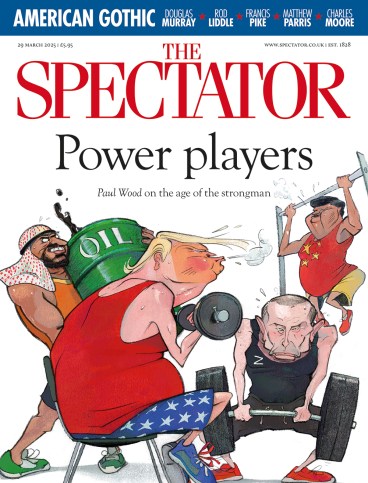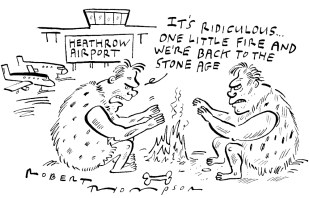
Michelle de Kretser, of a Sri Lankan family living in Australia, is an exceptional novelist – perhaps among the ten best at work in English today. She has been recognised with literary prizes, but it’s surprising that she hasn’t made quite the impact on the public she deserves. She is one of those writers who one presses upon intelligent acquaintances and whose books reward rereading.
One of her regular subjects – she is a novelist of bookish, intelligent lives – is the inability of the Australian intelligentsia ever to read an Australian novel. As the author of The Life to Come, perhaps the best Australian novel since Tim Winton’s Cloudstreet, she does well to present this worrying disengagement with amusement. If Australian readers could only turn away from their exhausting preoccupation with Virginia Woolf, for instance, the well-funded academic industry might notice that one of the cleverest and wittiest writers of the age is worth their attention. And on the other side of the world, we might notice her excellence in greater numbers, too.
De Kretser returns repeatedly to the place of the immigrant in an established culture, dominated by European principles but not altogether confident in those values. It is not a new subject. Fiction has always been drawn to individuals not quite sure of their place, who are going to work to establish their presence against repressive forces. The novel as a form loves individuals fighting to get on in the world. These may be disadvantaged by sex (Jane Eyre) or by class (Moll Flanders), or by race, nationality or any number of things. The novel doesn’t often waste time bemoaning the fact that people have challenges in society to overcome. It acknowledges those forces, and then sets a person off to triumph or defeat. An individual who wants to make his way through his wits and system-defeating, money-making ingenuity – from Sam Selvon’s great The Lonely Londoners onwards – is at the heart of the endeavour. As are the forces of control and repression that the newcomer needs to overcome.
So it is with de Kretser. Her previous book, Scary Monsters, two novellas combined, sets an individual loose in an expatriate community where it emerges only slowly that everyone apart from her is rich and has nothing to worry about. In the second part, an immigrant family, in a near future, struggles to master the increasingly absurd rules of society. Without a full sense of understanding, the members are sitting ducks for society’s most rapacious demands. ‘All the five-bedroom, detached, Colgate-white houses were taller than the trees. They still are – our street trees have never really flourished.’ The future is grim, but also funny: ‘It emerged that Ikea had once been called Zaynab. She’d changed her name, as so many Muslims did when the ban came in.’ The central figure of the first novella, Lilian, is reported in passing to have been tracked down and murdered in France. It hardly matters. Lives are glimpsed from the sidelines or they can be examined centrally, and when they end we needn’t invest in them. The lives of immigrants above all.
The insight is deeply embedded in the technique of the novel as a historical form, which always chooses who to focus on and who to pass over lightly. De Kretser is a superb technician. Her novel The Lost Dog is about precisely that, a lost dog, and uses the search for it and its eventual return to illuminate decades of individual history, passing effortlessly across continents while never losing intimate control.
Her magnificent The Life to Come moves through a bunch of loosely connected lives – characters passing from casual presences to central dramas. It is an extraordinarily funny novel, vividly satirical and joyously unsympathetic towards some remarkably stupid people. It would be easy to base a claim for its excellence on its thought-provoking theme, but a novel can have a serious subject and be no good at all. What takes de Kretser to the highest level is her entrancing wit and the precision of her social analysis. When she gives an account of people, she does something both instantly recognisable and utterly unfamiliar. We feel, as with Dickens, that we have always known this sort of character, but not from their being described in literature. And they are summoned up without resource to the recondite. A rich boyfriend has four intimidating sisters – ‘they were girls with ponies in their pasts’.
De Kretser is also excellent on the exact, possibly innocuous, acts and statements that make one feel that a friendship or a love affair may have run its course – the person who, out of nowhere, is ‘running a Facebook poll on whether people preferred their freekeh toasted or not’. And it is not every novelist who can summon up a truly terrible party with the sentence: ‘Katrina was standing by the drinks table on the side veranda talking about her cervix.’
Theory & Practice is an innovative, compelling book which takes ingenious steps to persuade us that we are not reading fiction but documentary truth. A novel begins, but after a score of pages a voice breaks in saying that they were trying to write this novel but it has dried up: let us instead talk about real things. There are some initial essayistic gestures, about literature and in particular about Virginia Woolf. Years ago, the narrator was writing a paper about Woolf, and was held up by a hideous paragraph in her diaries. Woolf was visited by a Sri Lankan politician, the national hero Edward Perera. He meant nothing to Woolf, though a good deal to the narrator, herself of Sri Lankan ancestry. She admires Woolf; but Woolf describes Perera as a ‘mahogany-coloured wretch’ with no conversational ability. What to do with this fact in an academic milieu which seems to have no means of acknowledging that Woolf could have said such a thing?

The narrator’s world of literature, argument and somewhere in the background a beloved mother who has not quite come to terms with Australia produces some leisurely, indifferent figures. Kit, a beautiful bohemian in a ‘deconstructed relationship’ with a rich blonde girl called Olivia, makes himself available, on limited terms. De Kretser’s readers may be reminded of the excruciating page in The Lost Dog when Iris’s lover is killed, and his previously friendly sister is horrified that a native girl should be entitled to grief – ‘The idea of Larry and you… with your spangles-on-net dresses’. Kit is not serious; but there is something unstoppable about the narrator’s engagement, weightless but momentous. An essayistic approach begins to yield, unexpectedly, a truly compelling plot of obsession and catastrophe. ‘I walked over to Kit’s. Clouds were heading the same way, as purposeful as trains.’ Her first experience of a western man was a music examiner who molested her during the exam, before failing to give her a distinction. This time, she is going to have her own way, and she uses the flesh of her lover Kit to send wordless, hostile messages to his girlfriend:
He left my place with a bruise developing on one arm. The next time I saw him he had a bruise on his neck. Olivia and I were exchanging messages about possession and power. Kit was only the paper on which we were writing to each other.
Like de Kretser’s other work, Theory & Practice is a novel of considerable wit and brutal comedy. Often we are engaged with the question of what the exact point is when we find our laughter coming to an end. After all, it is funny that Woolf thought she could dismiss a great man like Perera with the phrase ‘mahogany-coloured wretch’, and the narrator uses it for a time of herself, with something like amusement; and then it ceases to be amusing.
Humour in de Kretser is a sign of keen understanding and intelligence. She is writing about something of significance, but a novelist of this grace, linguistic bravura and inventiveness could write about nothing of significance and still hold our attention and admiration. Newcomers should start with The Life to Come, but this is an author working at the top of her game.







Comments